

|
 (Worcester Sauce or Worcestershire Sauce) An English Piquant Sauce sauce. A liquid condiment sauce based on decomposed anchovies with pureed fruit and spices, commonly used as a table relish on roast meats and as an essential ingredient in the ‘Bloody Mary’ cocktail. Worcester sauce is unusual in that, although it is based on fish, it tastes rather like a meat gravy. It seems to originate as an accompaniment to the equally meat-like Worcester Lampreys, known to be a specialty of the town at least since the 1400’s. These odd eel-like fish, with their fish-based sauce, were much prized as a substitute for ‘real’ meat on fast days, allowing the ingeniously devout to meet their religious duties without missing-out on the taste of red meat. Soaking small fish, typically anchovies, for several weeks in water until they dissolve into a dark meaty-tasting liquid can be traced back to the Roman ‘garum’ sauce and there have long been several makers in England. Burgess’s ‘Original and Superior Essence of Anchovies’, ‘Ashworth’s Sauce’, Harvey’s Sauce and Young’s of Bond Street’s ‘Curious Essence of Anchovies’ can all be traced at least to the late 18th Century. In Worcester, J.Williams & Co (“under the patronage of the Duke of Gloucester”) and Parry’s in The Cross were advertising bottled sauce from the 1820’s, and the earliest references to ‘Worcester Sauce’ by exactly that name associate it with the famous lamprey dish. 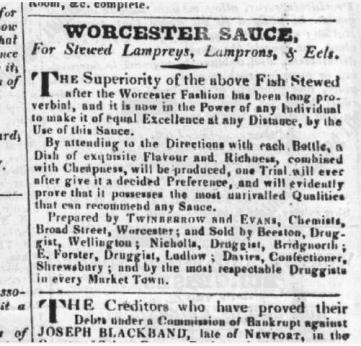 The Salopian Journal, 21 July 1830 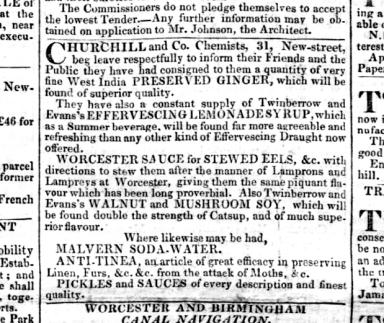 Advertisement for Worcester Sauce ‘Birmingham Gazette‘, 13 June 1831 But the history of modern Worcester Sauce has become somewhat clouded by the incredibly creative, much-repeated and almost completely fake claims of the Lea and Perrin Company. As far as we can tell from records at Companies House, the National Archives, the Patent Office and from contemporary news reports it seems to be the case that two dispensing chemists, John Wheeley Lea and William Henry Perrins of Worcester entered into partnership around 1824. By 1825 they were advertising for an apprentice, and we know that by 1827 they were agents for Pindin and Gowan’s Patent Trusses, and were offering ‘Cheltenham Salts’, worming tablets for horses, water filters, indigestion tablets, ‘Mr. Alex’s Camphorated Dentifrice and his Restorative Lotion’ and ‘Locock’s Hair Restorer‘. About 1830 the company became agents for Johnson’s ‘German Sauce’, just at the time their nearby rival chemists Twinberrow and Evans (“Patronised by their Royal Highnesses”) started distributing imported Indian sauces. In the 1840’s Lea and Perrin began advertising their own version of ‘Worcester Sauce’, offering it as much a medicine as a condiment, so much so that a commentator could wryly say that “from what has been divulged respecting this condiment we may indulge freely in its use with the pleasing impression that we are at the same time actually under medical treatment” 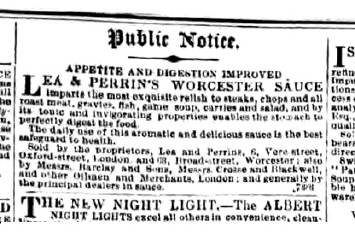 Lea & Perrin’s Worcester Sauce ‘Leeds Mercury‘ – Saturday 10 November 1849 Lea and Perrins advertised, as they still do, that their sauce was ‘prepared from a receipt of a nobleman in the county’. They claimed that it was ‘the only good sauce’ and promoted a number of legends surrounding its inception, amongst which are that it was devised for Lord Marcus Sandys in imitation of the sauces he had encountered as governor of one of the Indian States (there is no record of Lord Sandys, (1798-1863) the 1860’s MP for Newry, ever even visiting India); and that the original batch was discarded, only to be rediscovered some months later and found to be delicious (storing for several months is the normal method of making dissolved-fish sauce).    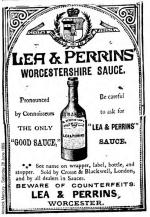 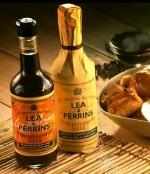  But then, their early advertising was, to put it politely, extraordinarily inventive, frequently including fascinating claims as to its powers: “the best sauce extant, it has has extended to every quarter of the globe; its efficacy in promoting the general health is becoming daily more and more acknowledged. In the United States it is esteemed for its tonic and invigorating properties, the habitual use enabling the stomach perfectly to digest the food.” And then there were the testimonials to the miraculous sauce; “I have carried a bottle of your Worcestershire sauce in a tour, which I have just completed, through Spain and Portugal, and I believe I owe my present state of health to its use. Your sauce is a stomachic, and, I think, medicine – I can with truth say, there is nothing in a traveller’s baggage so essential to his comfort, at least in these countries, as your sauce”. The Lea and Perrin business was sold in 1930 to HP Foods, then to Danone, and in 2005 to HJ Heinz. As no-one could ever demonstrate who actually originated bottled Worcester Sauce, a fact confirmed by court cases in 1875 and 1895, brands proliferated – Purnell of Bristol, Holbrook’s, Herberts, Courteneys, Mellors and more – throughout the 19th Century. 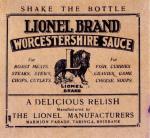 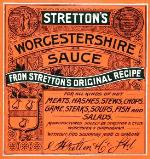  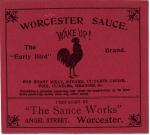 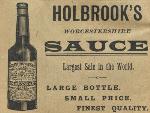 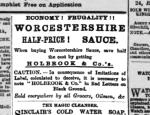 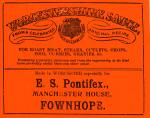   Was Worcester sauce once much spicier? The 1888 ‘Diary of a Nobody’ has “Burnt my tongue most awfully with the Worcester sauce” the 1889 ‘Three Men in a Boat’ explains how “Harris’s eyes fill with tears after having put too much Worcester over his chop” and Grant Allen’s 1889 book ‘Falling in Love‘ lists Worcestershire sauce as a spice alongside Mulligatawny soup and preserved ginger. Other English piquant liquid sauces include: Harvey Sauce Worcester Sauce Mrs. Comber’s Sauce Wow-Wow Sauce Muckleston’s Celebrated Shropshire Sauce Reading Sauce Yorkshire Relish  |
|
MORE FROM Foods of England... Cookbooks ● Diary ● Index ● Magic Menu ● Random ● Really English? ● Timeline ● Donate ● Royalty ● English Service ● Food Map of England ● Lost Foods ● Accompaniments ● Biscuits ● Breads ● Cakes and Scones ● Cheeses ● Classic Meals ● Curry Dishes ● Dairy ● Drinks ● Egg Dishes ● Fish ● Fruit ● Fruits & Vegetables ● Game & Offal ● Meat & Meat Dishes ● Pastries and Pies ● Pot Meals ● Poultry ● Preserves & Jams ● Puddings & Sweets ● Sauces and Spicery ● Sausages ● Scones ● Soups ● Sweets and Toffee ● About ... ● Bookshop ● Email: [email protected] COPYRIGHT and ALL RIGHTS RESERVED: © Glyn Hughes 2022 BUILT WITH WHIMBERRY |